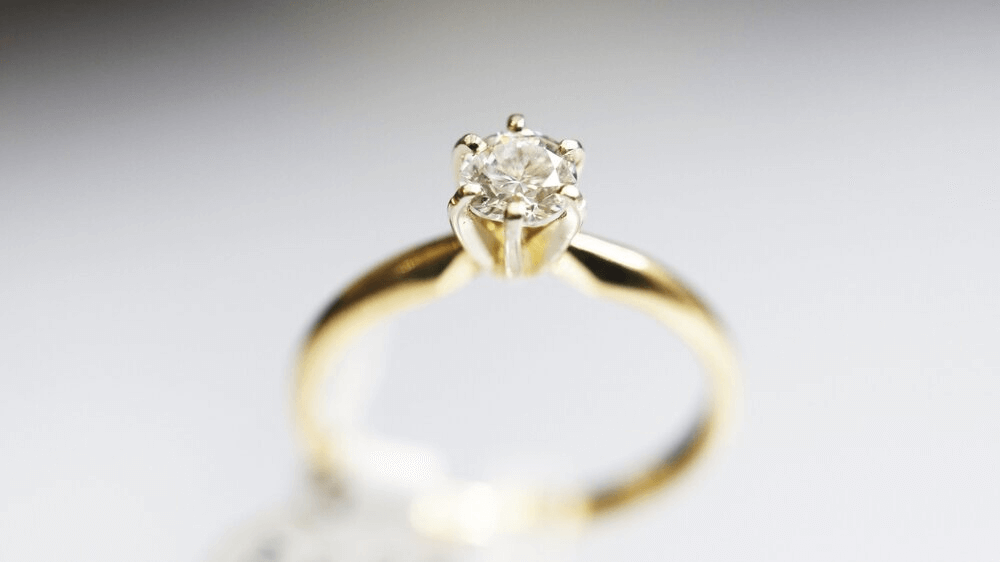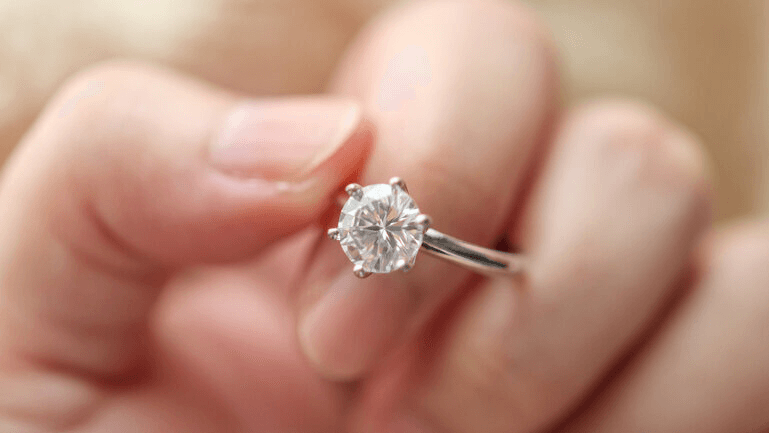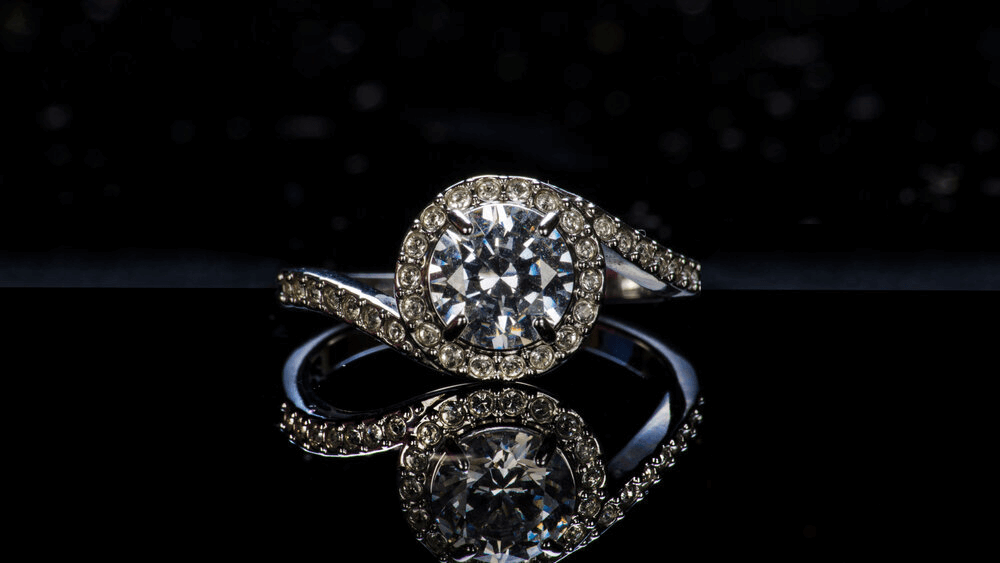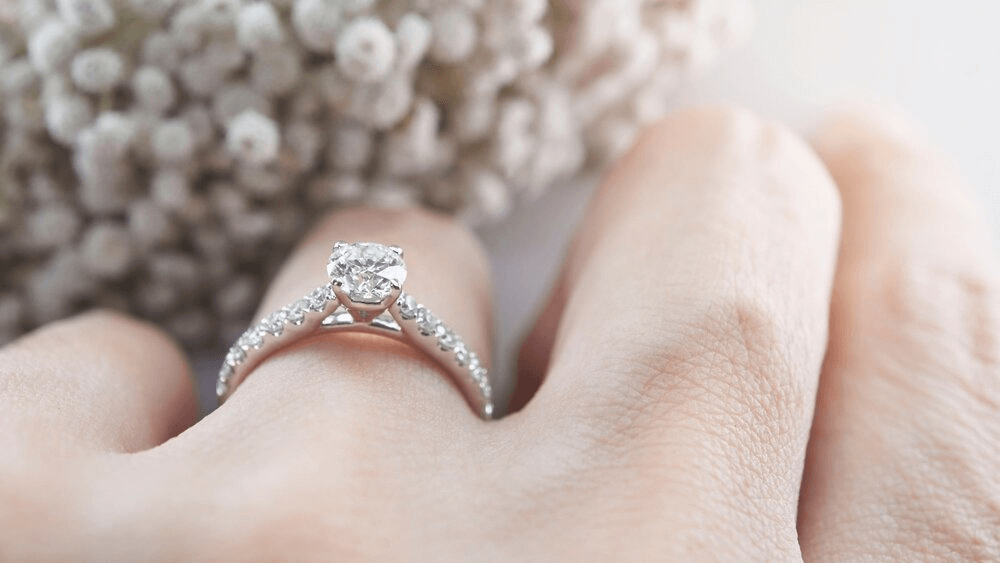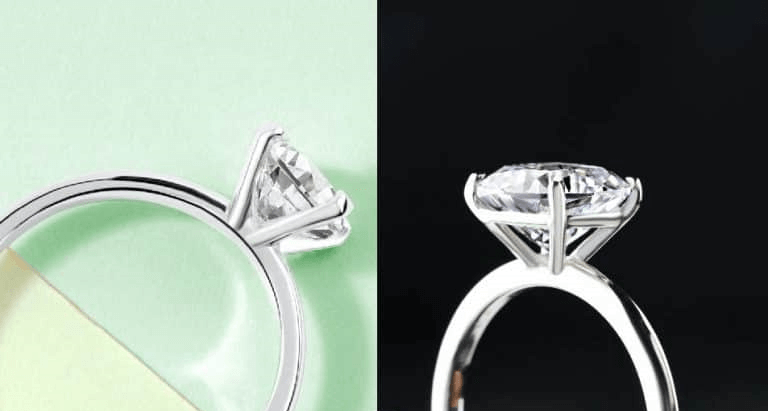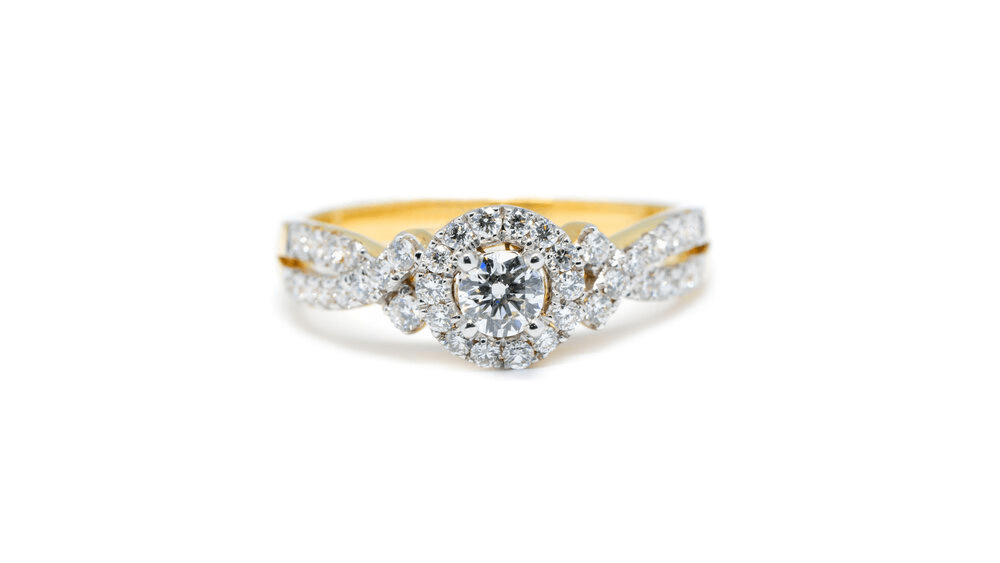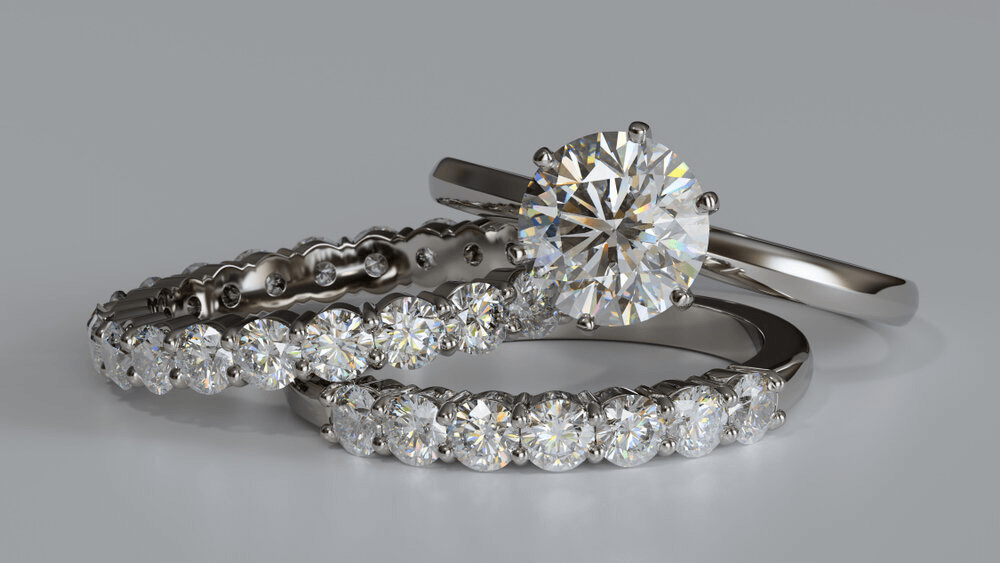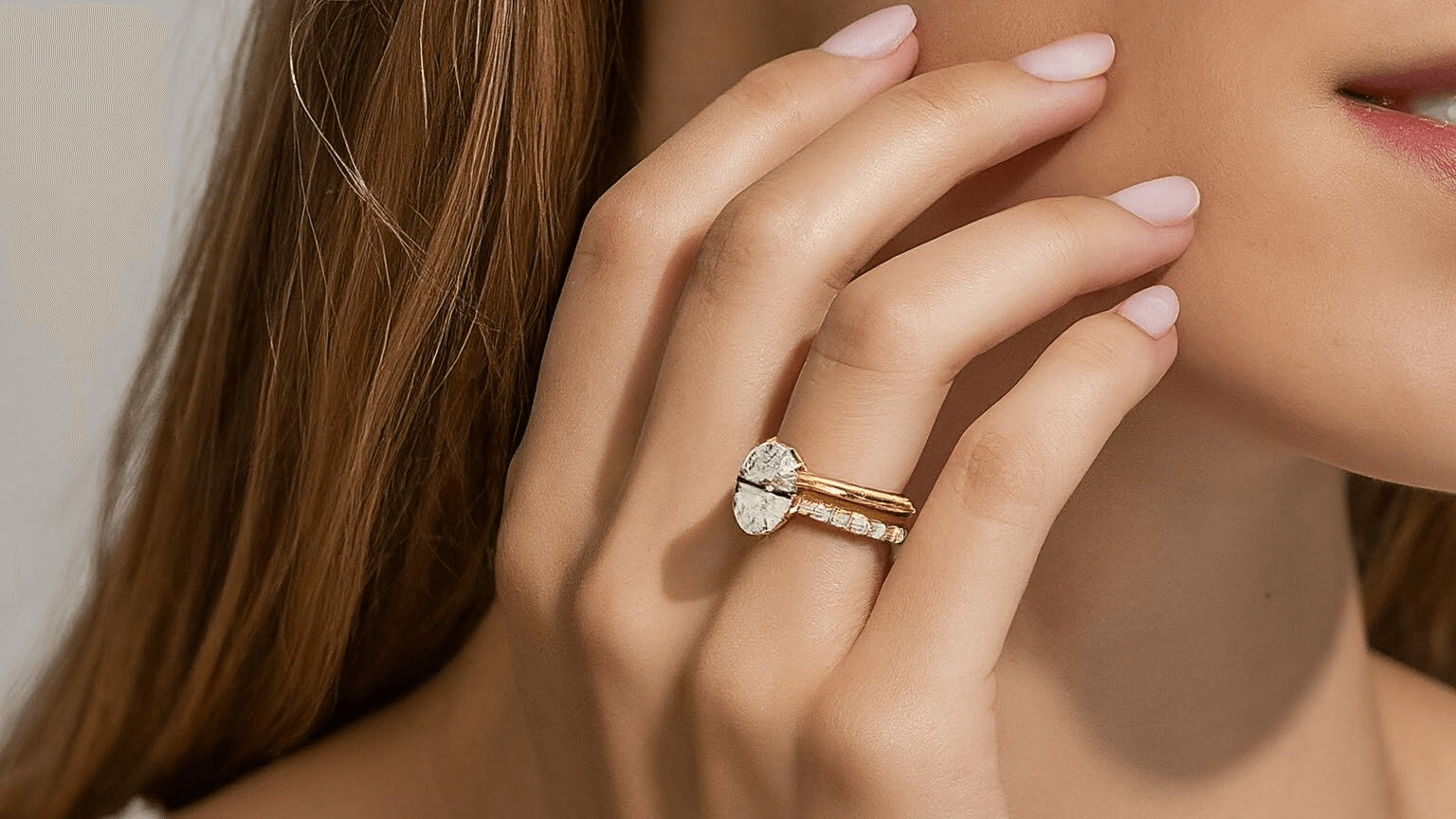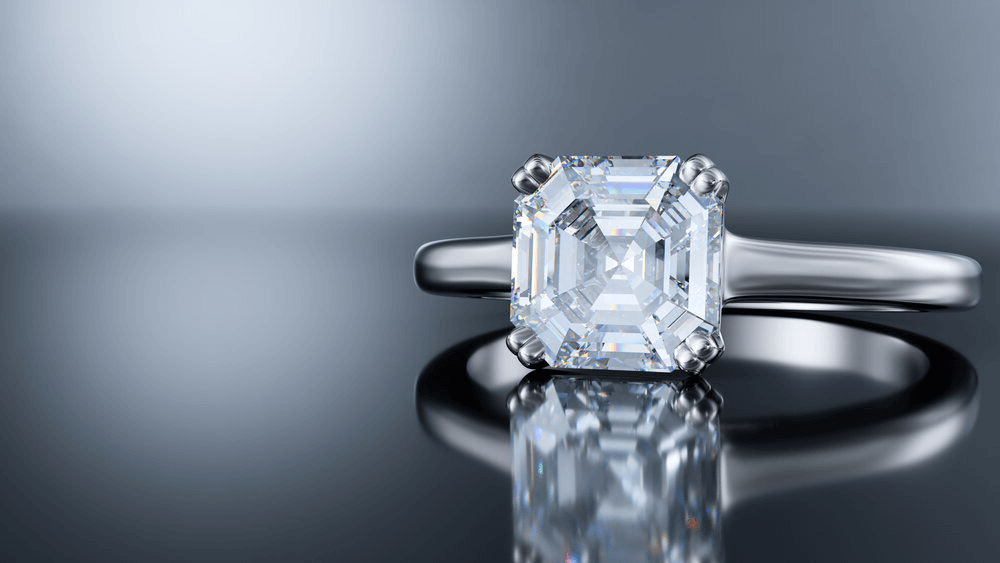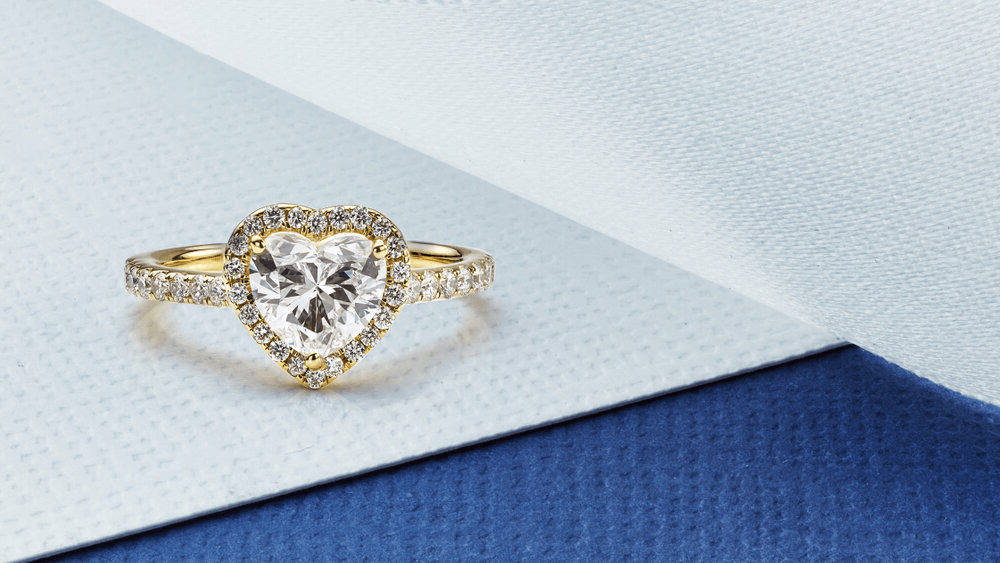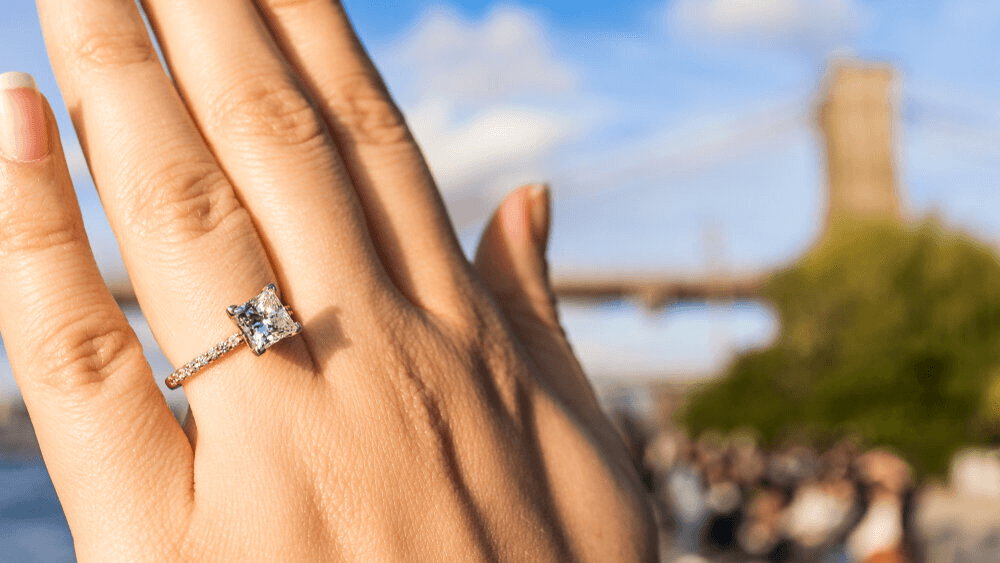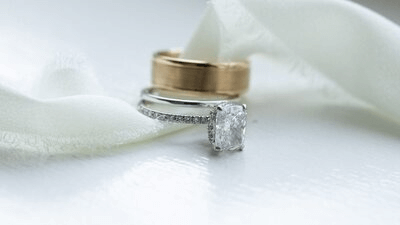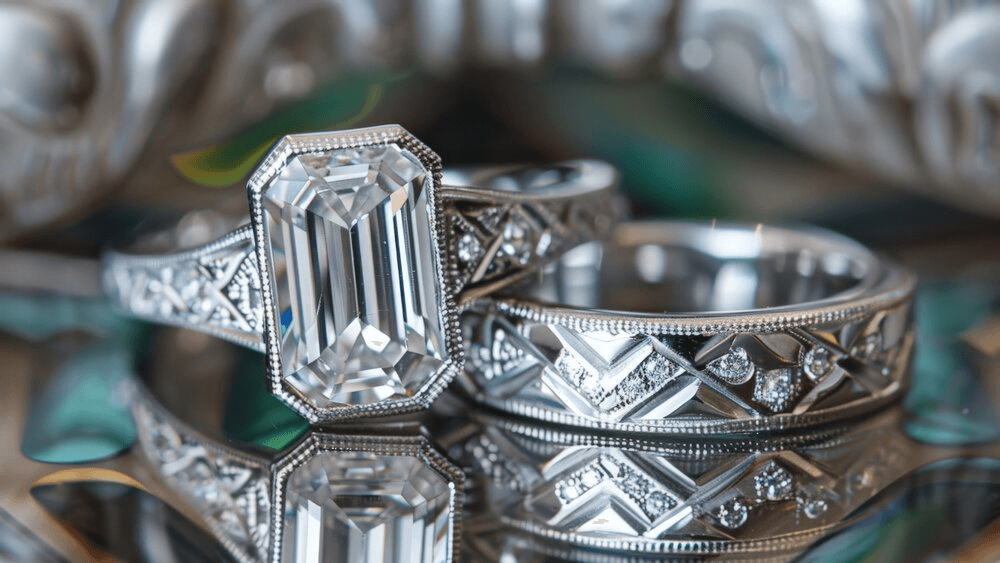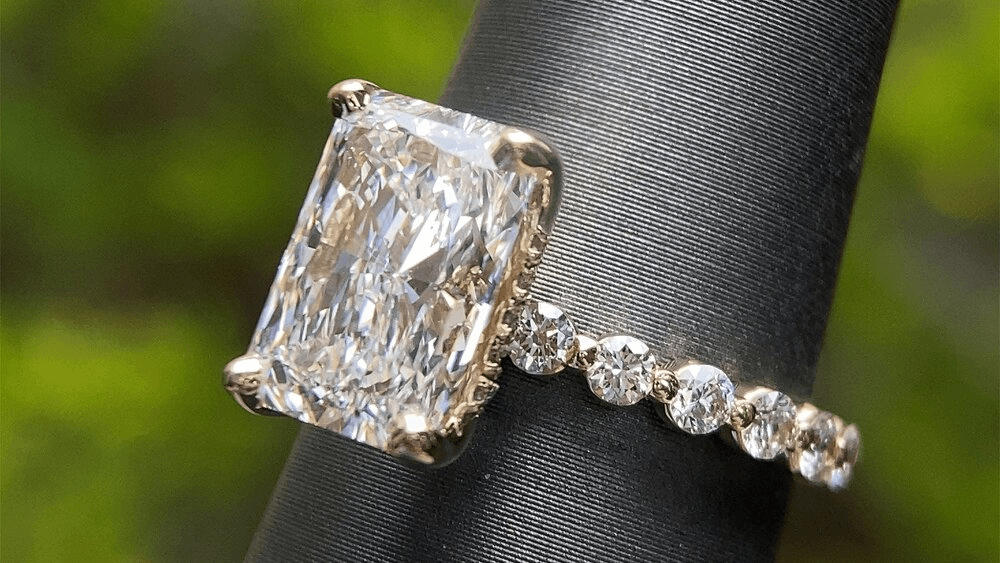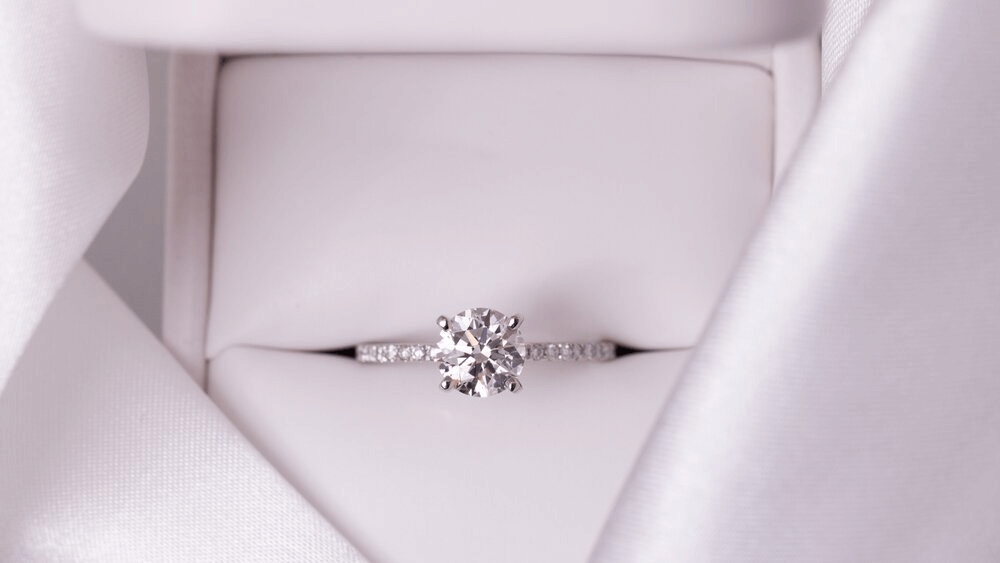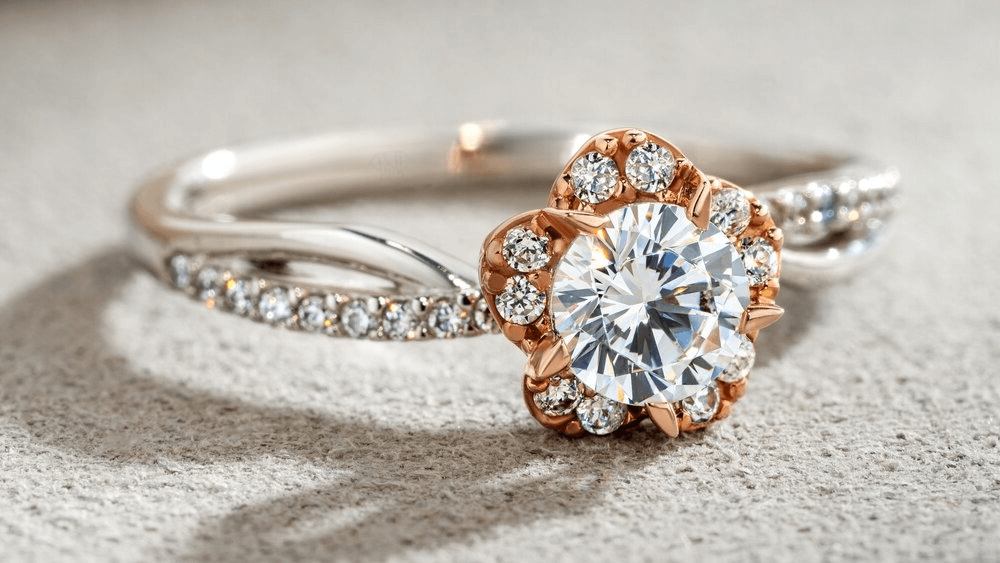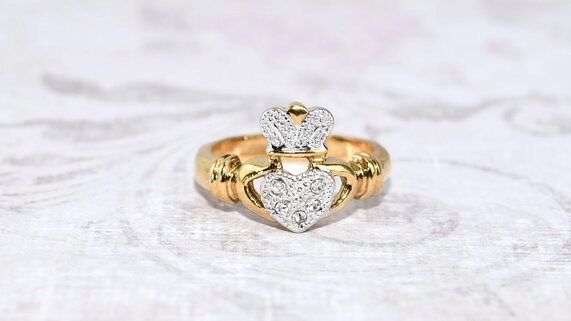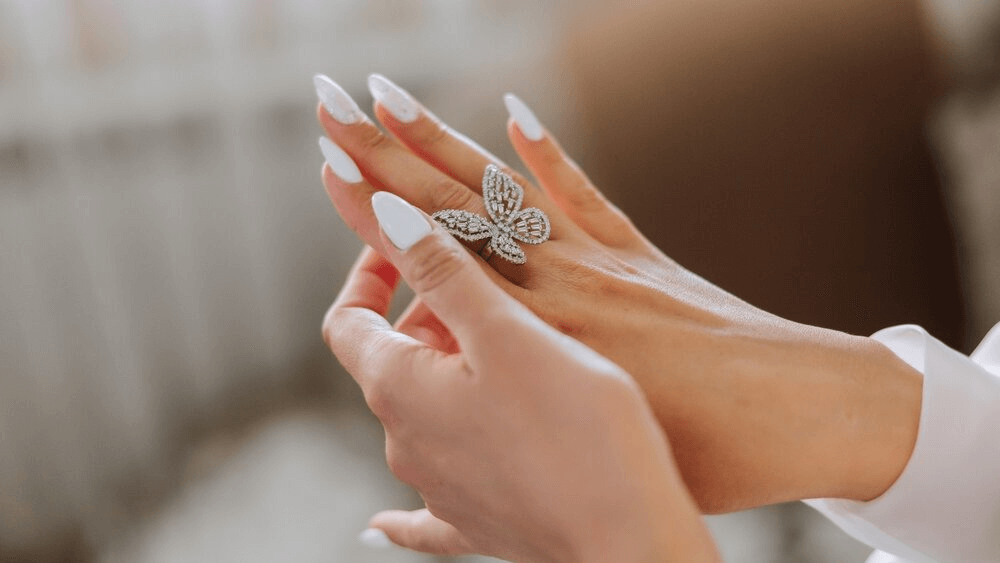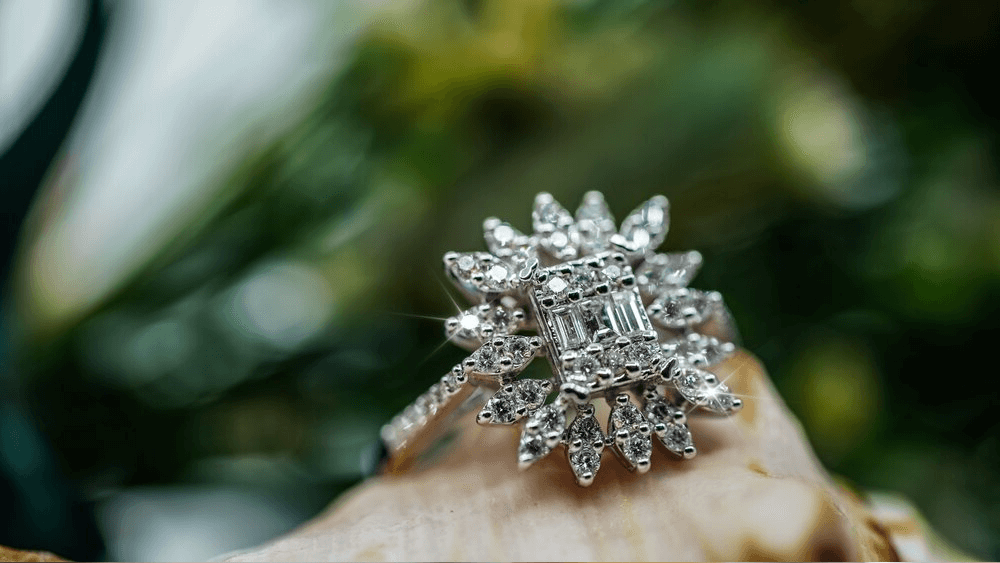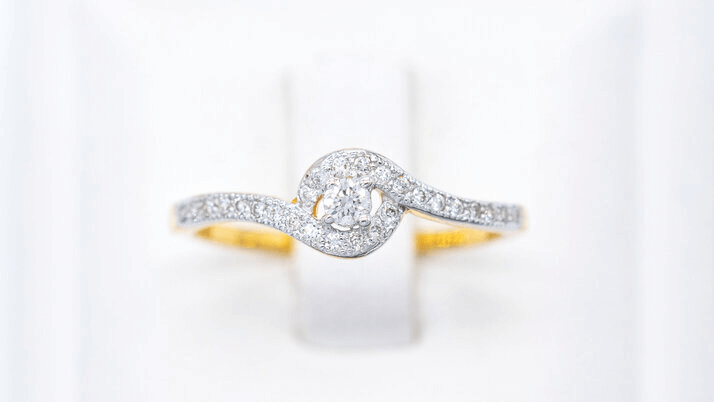Stand Out with East to West Engagement Rings

By Gary A.

Edited by Olivia H.
Published Aug 8, 2024
Edited on Mar 31, 2025
East to West engagement rings offer a fresh and modern twist on traditional designs, positioning the diamond in a way that captures attention and exudes contemporary elegance.

Navigate This Guide:
- 7 Quick Tips for Buying an East to West Engagement Ring: Navigating the 4Cs
- Introduction to East to West Engagement Rings
- What Are East to West Diamond Engagement Rings?
- The Rise of Horizontal Ring Settings
- The Charm and Aesthetics of East to West Designs
- Choosing Your Perfect Stone and Setting
- Our Expert Take: Making Your Choice
- 8 Frequently Asked Questions About East to West Engagement Rings
Before we dive deeper into the specifics, here are some practical tips to help guide your decision-making process:
7 Quick Tips for Buying an East to West Engagement Ring: Navigating the 4Cs
When delving into the world of East to West Engagement Rings, understanding the 4Cs—Cut, Color, Clarity, and Carat—becomes paramount. These unique horizontal ring settings present a modern twist on traditional engagement rings, making the examination of their 4Cs even more crucial.
- Tip 1: Emphasize Cut Quality for Maximum Brilliance
- For East to West settings, the cut quality cannot be overstated. A well-cut diamond, especially in elongated shapes like oval, marquise, or emerald, will ensure maximum brilliance and sparkle, essential for the horizontal orientation. Look for symmetry and proportions that enhance the stone’s reflective qualities, making it the centerpiece of the ring.
- Tip 2: Consider Warmer Tones for Yellow or Rose Gold Settings
- The color of your diamond plays a significant role, particularly in East to West settings, where the stone’s expanse is more visible. If opting for yellow or rose gold bands, consider slightly warmer diamond colors (G-H range). These can complement the setting beautifully without the premium price of colorless diamonds.
- Tip 3: Balance Clarity with the Ring’s Style
- In East to West Engagement Rings, the diamond’s clarity becomes a focal point due to its horizontal spread across the finger. However, remember that minor inclusions can be masked by strategic setting choices. Opt for a clarity grade that ensures the diamond appears clean to the naked eye, offering a balance between aesthetic and value.
- Tip 4: Prioritize Proportions Over Mere Carat Weight
- With East to West settings, the perceived size of the diamond is enhanced due to its horizontal orientation. This allows for flexibility in choosing a carat weight that suits your budget without compromising on the ring’s visual impact. Focus on the stone’s proportions and how it complements the wearer’s finger, rather than just the carat weight.
- Tip 5: Setting Security:
- Ensure the diamond is securely mounted in its horizontal setting. Prongs or bezels should snugly encase the stone to protect it from daily wear and potential impacts
- Tip 6: Band Width and Style:
- The ring’s band should complement the East to West setting, providing balance and support. A wider band can offer stability to larger stones, while a slender band might suit more delicate designs.
- Tip 7: Personal Style and Comfort:
- Ultimately, the ring should reflect the wearer’s personal style and be comfortable for everyday wear. Consider the lifestyle and preferences of the wearer, ensuring the East to West ring aligns with their daily activities and aesthetic tastes.
Now that you’ve got these practical tips, use Jeweler AI below to find the perfect engagement ring that suits your style and budget:
Introduction to East to West Engagement Rings?
Fans of Great Gatsby will know that no better love story has ever been told than the one between East and West. While east to west engagement rings may be in a different ballpark to Jay and Daisy, they’ve also been capturing hearts for a very long time now. Modern, unique, but a true rival to the most traditional engagement ring styles in both beauty and versatility, this is not a style to miss if you’re looking to turn heads.
Here’s everything you need to know about east to west engagement rings, from what they are to how to pick the perfect one.
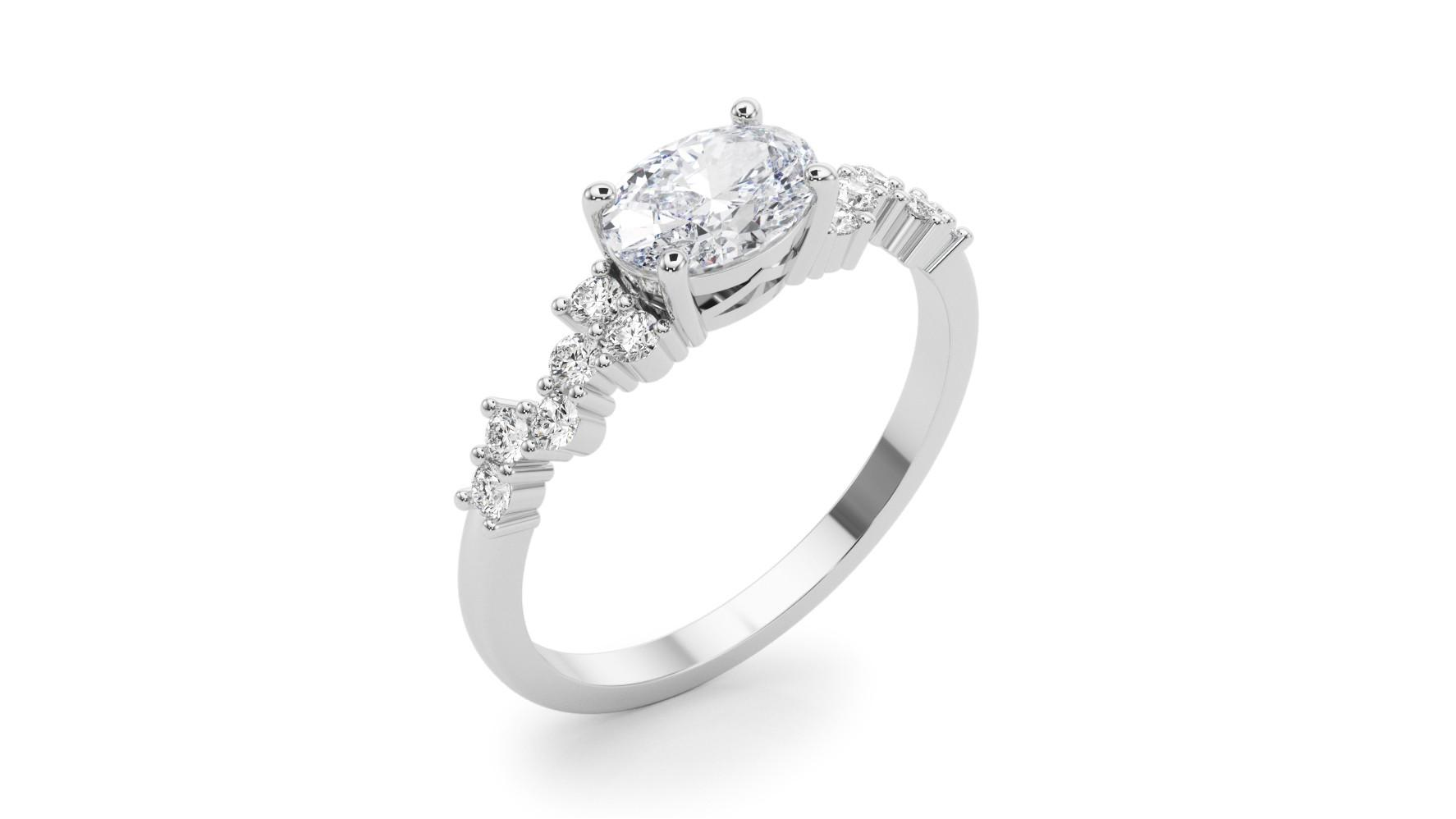
What Are East to West Diamond Engagement Rings?
Simply put, east to west refers to the orientation of the diamond. While this doesn’t work for shapes with circular or square proportions like the Round Brilliant or the Princess, it refers to the directions elongated shapes like the Oval, Pear, Emerald, or Marquise are ‘pointing’ in when set in the ring.
Let’s say you’re looking at Oval engagement rings. In the overwhelming majority of rings you’ll come across, the stone will be set north-south, following the length of the finger so that the narrower ends point toward the knuckle and the fingernail.
When an oval is set east to west, it’ll be oriented width-ways rather than length-ways, so that the two narrower ends point toward the pinkie and middle finger.
The Rise of Horizontal Ring Settings
East to west settings are a lot less usual than north to south settings. Why? Because we generally consider north to south settings as allowing an elongated shape to appear longer. It’s a little like the idea that wearing vertical stripes will make you look taller and slimmer. Since the onlooker’s eye is drawn up and down, both the diamond and the finger are said to appear longer.
Whether or not it works is down to you. The effect will never transform a 0.5 carat diamond into looking like a 1 carat diamond but, to some people, it’s enough to justify the north to south orientation.
The popularity of north to south engagement rings now means that east to west rings have a more contemporary, boundary-pushing vibe that appeals to many of us. We’re so used to seeing diamonds set a certain way that subverting those expectations has a very powerful impact on the ring’s overall vibe.
The Charm and Aesthetics of East to West Designs
An east to west orientation allows you to do a lot with very little. You don’t need to go crazy with design features and novel elements here; simply rotating your diamond 45° can be all you need in order to capture that sophisticated, modern vibe you’re looking for.
Then again, combining an east to west setting with another modern element like a bezel will create a really streamlined, edgy ring. Combining the diamond with accent stones oriented in the traditional north-south direction can lead to a very unexpected silhouette – something much more unique than the quintessential designs.
In other words, you can do as much or as little as you want. The east to west configuration is a powerful design element in and of itself, but it’s not showy or over-the-top, and leaves room for a lot more – if that’s what you want.
Choosing Your Perfect Stone and Setting
First of all, the diamond. As always, you’ll want to make sure that the diamond you’re choosing to sit at the very center of your ring is eye clean, devoid of any traces of color (unless, of course, you’re opting for a fancy color diamond), and cut to a very high standard. GIA certification is essential, along with low fluorescence and no significant bow tie effect – a common downside to the elongated diamond shapes.
When it comes to the setting, remember to separate it all into its individual components. Think about the prongs – or whether you want to subvert convention and go for a bezel or half bezel instead. Ask yourself whether you want any accent stones and metalwork, or whether you want to keep things streamlined.
Our Jeweler AI is always on hand to help, and we’ve got all the guides you could need for pinning down your perfect design.
The Best Diamond Cuts for East to West Rings
Obviously, you’ll want to pick a diamond with an elongated shape. If it’s square or circular, you won’t know whether it’s pointing east, west, north, or south.
In general, the best results will be found with bilateral symmetry shapes. This means that the shape isn’t just symmetrical on its left and right sides, but top to bottom, too. The Marquise, Oval, elongated Cushion and Emerald are all perfect for the East to West ring style. If you were to divide any of these diamond’s face-up appearances into four by drawing a line down the center and a line across the center, each of those four sections would be identical.
Shapes that have unilateral symmetry can look a little ‘off’ when they’re oriented horizontally. Consider what a Heart shaped diamond would look like if it was oriented east to west instead of north to south. When the shape is symmetrical on one side (i.e., down the middle) but not the other (the top of a heart is very different to the bottom), the weight distribution can look all wrong.
Then again, maybe you want to subvert expectations even more. While the Pear cut is symmetrical along the Y axis, it’s asymmetrical along the X axis – and, as a result, jewelers typically think it looks ‘better’ oriented north-south, along that Y axis – it can look great oriented east to west.
While it’s not a perfect example, Megan Fox’s engagement ring from MGK is a good example of how a Pear (or, in her case, two) can look very intriguing when it’s not oriented along that Y -xis.
Customization and Personalization Tips
When it comes to breaking the mold in engagement ring design, you’ll want to get inspired, inspired, inspired. Look at as many examples as you can, from the rings available on our site to the rings that have graced the fingers of Hollywood royalty.
Remember that, even if your bride is more alternative, you don’t need to cram as many unconventional elements into the ring’s design as you can. As we mentioned above, an East to West setting can be all you need to take a diamond from traditional to totally original.
Practical Considerations, Durability and Everyday Wear
There is one (potential) downside to an east west engagement ring – it can be more prone to snagging. Take the Marquise diamond, for instance. When those two points are oriented sideways, they can extend beyond the edge of the finger and, as a result, prove more vulnerable to getting knocked and scraped.
Diamonds are strong, so a few collisions won’t ruin its appearance – particularly if those prongs are placed in strategic places – but it may be annoying, particularly when it’s always snagging on the lining of her handbag or pocket.
Choosing a more protective ring setting – in other words, dodging floating engagement ring settings altogether – and picking a diamond that your partner considers a comfortable size should stop your east west engagement ring from causing any trouble.
Our Expert Take: Making Your Choice
It may seem like a simple shift away from the traditional engagement ring designs, but opting for an east to west engagement ring is a powerful statement in favor of a more modern, less-expected approach to getting engaged.
It’s not for everyone, but if you’re buying a ring for someone with an edge to their personality and a love for modernity, this could be right up their street.
8 Frequently Asked Questions About East to West Engagement Rings
- Q: What is an East to West Engagement Ring?
- A: An East to West Engagement Ring features the center gemstone set horizontally across the band, rather than the traditional vertical setting. This orientation offers a contemporary twist on classic engagement ring designs.
- Q: Why Choose an East to West Setting?
- A: East to West settings provide a unique, modern look that can make the center stone appear larger and more prominent. It’s an excellent choice for those seeking a distinctive ring that stands out.
- Q: Can Any Diamond Shape Be Used in an East to West Setting?
- A: While most elongated shapes like oval, marquise, emerald, and pear work best, technically any diamond shape can be set in an East to West orientation. The choice depends on personal preference and the desired aesthetic.
- Q: Are East to West Rings More Expensive?
- A: Not necessarily. The cost primarily depends on the 4Cs of the center stone and the ring’s overall design and materials. The East to West setting itself doesn’t inherently increase the price.
- Q: How Do I Choose the Right Band for an East to West Ring?
- A: Consider the width and style of the band in relation to the size and shape of the center stone. A balanced design that complements both the stone and the wearer’s finger is ideal.
- Q: Can East to West Rings Be Resized?
- A: Yes, like most engagement rings, East to West rings can be resized. However, the ease of resizing can depend on the specific design and setting of the ring.
- Q: Is the East to West Setting a Durable Choice for Everyday Wear?
- A: Yes, with the proper setting choice, such as bezels or secure prongs, East to West rings can be just as durable as traditional settings for daily wear.
- Q: How Do I Care for My East to West Engagement Ring?
- A: Regular cleaning with gentle soap and water, annual check-ups with a jeweler to ensure the setting’s integrity, and avoiding harsh chemicals or physical activities while wearing the ring will keep it in excellent condition.
Explore the elegance of East to West Rings with Jeweler AI. Your perfect ring awaits!
FOLLOW-UP GUIDE SERIES





